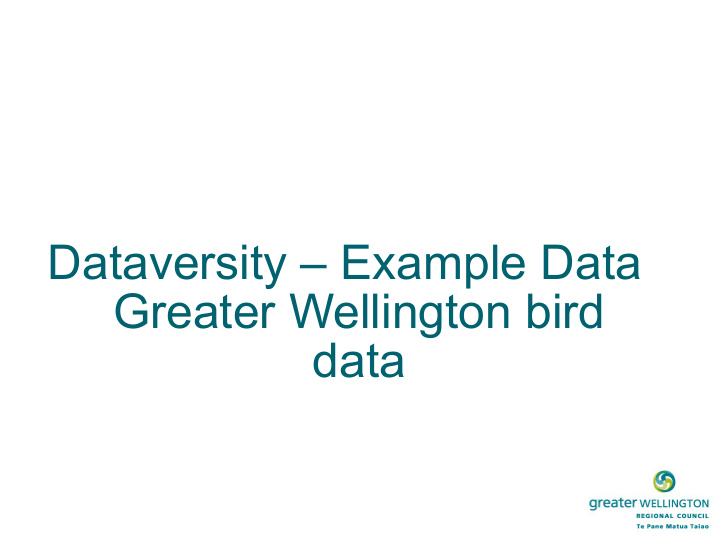



Dataversity – Example Data Greater Wellington bird data
Regional council statutory responsibilities • Resource Management Act – State of the Environment monitoring requirements – Regional Plans • Other Acts – Biosecurity Act – Local Government Act – Reserves Act
Regional council monitoring needs • State of the Environment • Policy effectiveness • Compliance • Outcome monitoring • Results monitoring
SOE reporting Ecological Integrity Framework • Species occupancy • Indigenous dominance • Ecosystem representation
Example SOE indicator Avian representation • Species richness (the number of species present) • Species occupancy (the proportion of locations occupied by a given species) • Species density (the number of individuals of a given species within a hectare).
Greater Wellington 8km x 8km grid
GW current bird monitoring purposes • Management outcomes, e.g. mainland islands, wider pest control • Trends over time/research • Inform management, e.g. nesting success of banded dotterel • Translocation success • Inform consents/compliance
Current GW bird data holdings • Five minute bird counts • Distance sampling • Slow walk transects • River surveys • Nesting success • Population viability • Wetland and lake surveys
GW: How data is held • Excel spread-sheets • DoC 5MBC template • Slow walk transect template (Handford, 2000) • Quality checks • All data entered into eBird to provide a back-up • Find eBird has flexibility to store most types of data, can be downloaded for analysis if necessary
Recommend
More recommend